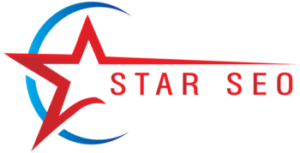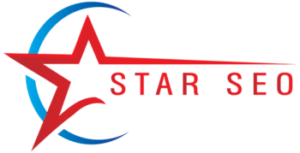Mannacote at the Forefront of Your Strategy
Mannacote inspires smarter content planning that aligns with search intent and drives organic traffic. You’ll see how clear structure, topical relevance, and user engagement all combine for optimized results. By weaving in relevant terms and synonyms, you enhance discoverability. This article explores search engine dynamics, keyword choice approaches, competitor insights, content architecture, internal linking schemes, and user‑focused design tactics. You’ll gain a holistic view of how SEO lifecycles fold into brand growth and user retention. Let’s jump into actionable tactics that refine your presence and build lasting visibility across search platforms.
Understanding Search Patterns and Intent
To rank higher, you must anticipate what users truly seek. Explore query behavior through analytics, identify transactional vs informational needs, and adapt your messaging. Use topic clusters, related searches, and long‑tail variations to enrich content relevance. Segmenting content by user goal helps tailor pages that satisfy intent quickly and directly. For example, grouping how‑to guides, comparison posts, or industry trends serves different audience segments. This user‑centric framing increases dwell time, reduces bounce, and reinforces credibility. Analytics and testing guide ongoing improvement. Optimizing for real intent beats keyword stuffing and yields sustainable results.
Keyword Ecosystem Mapping
Create a cluster around your central idea using synonyms, related phrases, and thematic supports. Think “content boost,” “search optimisation,” “visibility tactics,” or “organic traffic enhancement.” Mapping phrase relationships helps you cover wide ground and catch latent queries. Use tools to discover “top keywords,” “search volume,” or “semantic variants.” Craft titles, subheads, and body naturally around those. This dense yet reader‑friendly layering signals relevance to search engines. Additionally, interlink across pages in that cluster to demonstrate topical authority and improve crawl efficiency.
Crafting User‑Friendly Headings
Effective headings guide readers and engines alike. Use short, clear phrases like “Search Trends Today,” “Boost Content Authority,” or “Engagement Tactics.” Avoid repeating your main term in every heading. Instead, show diversity “Ranking Signals,” “User Journey Mapping,” “Link Value Paths,” “Topic Expansion.” These variations help broaden semantic reach and retain reader interest. Well‑placed keywords in headings improve scannability and accessibility.
Leveraging Competitive Analysis
See what top pages do: what content, phrases, visuals, or formats they use. Analyze competitors’ rich snippets, FAQ sections, or user ratings. Note how they approach topic clusters or integrate images and videos. Then differentiate: add unique angles, deeper data, clearer visuals, or stronger storytelling. By offering something better, you surpass them in value and visibility. Competitive insight sharpens your strategy and powerfully informs your roadmap.
Structuring Content for Scannability
Break text into short chunks, use bullet lists, bold key ideas, and embed graphics or charts. Use heading hierarchy to guide readers clearly from overview to detail. That pattern improves comprehension and dwell. Even dense topics become approachable and actionable. To support inclusive design, include alt‑text, readable font sizes, and mobile‑optimized layouts. All that fosters both SEO and user satisfaction.
Creating Semantic Richness
Beyond the focal phrase, include related concept words like “visibility,” “engagement,” “authority,” “search results,” and “performance metrics.” Reference tools, trends, metrics such as “CTR,” “impressions,” or “backlinks.” That breadth tells search engines your page addresses a topic ecosystem comprehensively. Avoid overusing the same words; vary wording for depth. This layered approach strengthens your content in both reader and algorithm eyes.
Encouraging On‑Page Engagement
Prompt readers to take action subscribe, read next, share. Use compelling call‑outs like “share your insight,” “explore related tips,” or “download a checklist.” Internal links to related posts keep people on‑site longer. Encourage comments or social tagging to foster interaction. These metrics feed behavioral signals that search engines value. Engaged audiences convert better, learn more, and help your SEO indirectly.
Optimizing Metadata and Schema
Craft descriptive meta titles and descriptions using strong terms and teaser language. Add structured data: FAQ markup, breadcrumbs, or article schema, to enhance SERP presentation. That increases click‑through rates, trust, and visibility. Clearly label content type (guide, how‑to, blog) to align expectations. Test rich snippet results and adjust accordingly. Schema helps you stand out on crowded SERPs.
Mobilizing Page Speed and Performance
Improve load times with compressed images, lean CSS, and optimized scripts. Use lazy‑load for media, efficient caching, and responsive design. Performance directly impacts user retention and ranking. Tools help audit speed and pinpoint fix areas. Even slight gains reduce bounce and boost ranking potential. Fast, smooth pages satisfy both users and search bots.
Building Quality Backlink Relationships
Cultivate real connections for genuine mentions: industry blogs, news sites, influencers, and partners. Share content worth linking unique insights, data, tools. Guest posts or co‑creates can pay off with authoritative links. These inbound signals remain strong ranking factors. Always align with relevance and quality. Quantity can boost awareness, but quality shapes credibility.
Tracking Performance and Iterating
Monitor analytics (traffic, bounce rate, conversions, keyword positions) to refine. Use A/B tests on headlines, CTAs, page layouts. If a page underperforms, tweak structure, add multimedia, or update keyword scope. Continuous improvement keeps your presence fresh and competitive.
Integrating Visual and Interactive Elements
Add images, infographics, slides, or calculators for richer experience. Visuals help comprehension and encourage shares. Interactive tools like quizzes or checklists boost engagement and dwell. Provide downloadable assets. This layered media strategy elevates content value and usability.
Speaking to Audience Personas
Tailor tone and examples to segments novices, managers, developers, marketers. Use relatable scenarios: “For a content marketer, quick wins look like optimizing title tags. For developers, structural markup matters.” That targeted speak increases relevance and retention. You’ll resonate and satisfy varied user intent.
Localizing Content and Signals
For locally relevant sites, mention location terms, local landmarks, or region‑specific queries. Use localized schema. Encourage local reviews or social mentions. Though mannacote isn’t geographically tied, local context boosts visibility when relevant. Personalized relevance increases both reach and conversions.
Encouraging Social and Community Participation
Share your content via forums, social platforms, industry groups. Invite participation through questions or polls. When your content gets referenced in conversations, it gains exposure and potential backlinks. Getting into communities builds trust and authority over time.
Maintaining Content Health and Freshness
Periodically update stats, refresh links, revise formatting, and reoptimize keywords. An evergreen piece remains useful through timely upgrades. Use content audits to flag underperformers. Add new sections or refine structure to maintain relevance. That longevity supports stable ranking.
Avoiding Over‑Optimization Pitfalls
Don’t overstuff keywords or engage in manipulative tactics. Avoid repeated exact matches or unnatural phrasing. Instead, focus on clarity, relevance, and usefulness. Balance keywords with readable flow. That keeps content user‑friendly and algorithm‑approved.
Bringing It Back Enhancing Focus with a Nod to mannacote
Consider the example of “mannacote” to think metaphorically about your SEO approach unique, memorable, and central. Treat it as a guiding idea: delicate, brandable, and effective. Use that unique edge to shape your strategy, but don’t rely solely on one phrase. Strengthen it with broader context, timely updates, and audience value. That balanced strategy outperforms gimmicks.
Putting It All Together for Sustainable Rankings
Use layered headings, synonyms, structured data, and engaging media. Build clusters with related terms, mindful internal linking, and ongoing refinement. Watch performance metrics and respond with updates. Engage audiences through relevance, clarity, and value. That dynamic, multi‑angled approach produces consistent organic growth. You’ll not only rank you’ll inspire trust, readership, retention, and authority.


